In this post, we will go through the Deployment of KeePass Using Intune LOB Model. In this Intune application deployment guide, we will help you with KeePass Password Safe deployment and uploading an MSI in Intune Admin center.
KeePass is a free, open-source password manager that helps you manage your passwords securely. All passwords are stored in one database, which is protected by a master key. This means that there is only one master key you need to remember to unlock the whole database.
KeePass database files are encrypted. KeePass encrypts the whole database, i.e. not only your passwords but also your user names, URLs, notes, etc. The best encryption algorithms are used to ensure the safety of database files (AES-256, ChaCha20, and Twofish).
KeePass Password Safe manager is primarily for Windows. The full source code of the application can be viewed to determine whether or not the security features are implemented correctly. KeePass is not available as a self-hosted application.
Deployment of KeePass Using Intune
Follow the steps below to upload the MSI file for deploying KeePass using Intune. To start with the Intune line-of-business app package creation, keep the downloaded KeePass-2.52.msi setup installation file in the appropriate location.
One can easily download the 64-bit application directly from KeePass. They have provided different setups for different environments. One can easily differentiate and choose the right setup for the Windows 64-bit architecture.
- Sign in to the Microsoft Intune admin center https://endpoint.microsoft.com/
- Here you have two options to jump into the Application creation. Select Apps > All apps > Add, or you can navigate to Apps > Windows > Windows Apps.
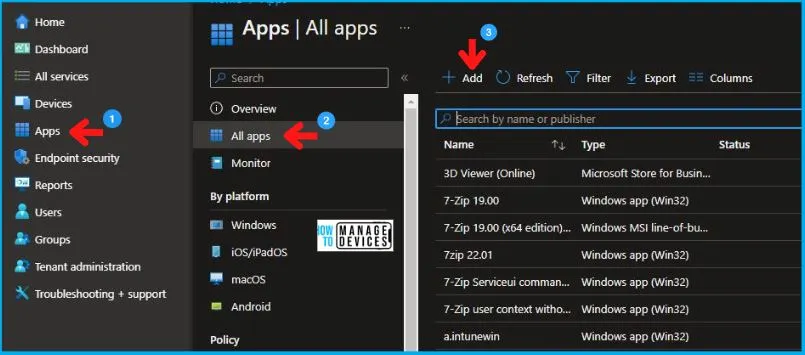
In the Select app type pane, under the Other app types, select Line-of-business app and click Select.
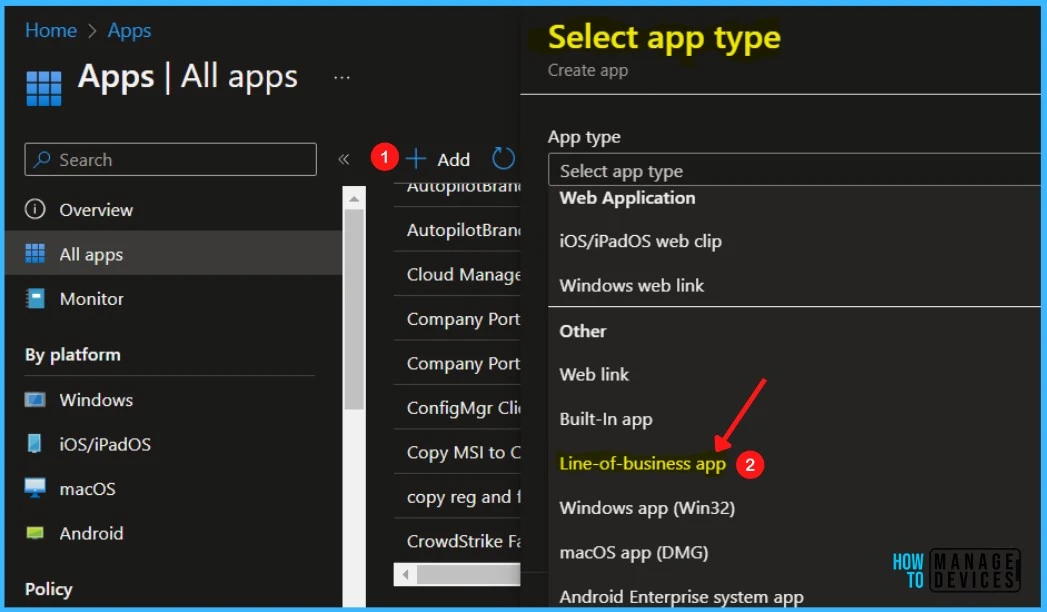
Now in the Add app pane, click Select app package file. Select the browse button. Then, select the downloaded application MSI file. Once you select the app file, The app details appear with Name, Platform, Size, and context. When you’re finished, select OK on the App package file pane.

Enter the Name of the App (For Example – KeePass), and Enter the description of the app. Enter the Publisher name – KeePass and Command-line arguments – Optionally, enter any command-line arguments you want to apply to the .msi file when it runs.
Also, refer to the below table for better understanding settings that we implemented during this phase of the KeePass Assignment:
| Name | Publisher | App Install Context | Ignore App Version |
|---|---|---|---|
| KeePass 2.52 | KeePass | Device | No |
- App install context – Select App install context as Device. This specifies the install context to be associated with this app. For dual-mode apps, select the desired context for this app. For all other apps, this is pre-selected based on the package and cannot be modified.
- Ignore app version – Select Yes for apps that are automatically updated by the app developer (such as Google Chrome, Zoom).
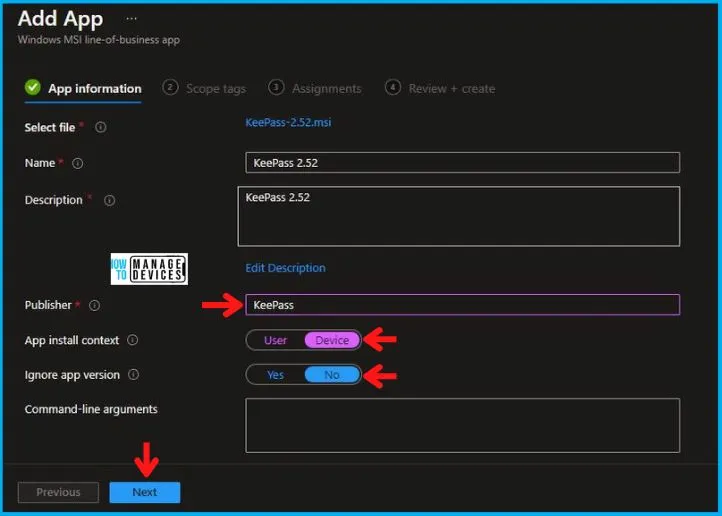
Also, Upload an icon for the app. When users browse the company portal, this icon is displayed with the app. In this section, you can provide additional information about the application and click Next,
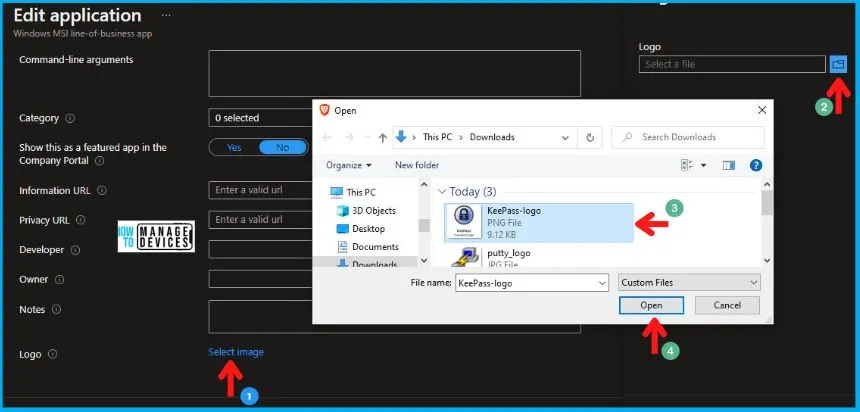
Scope tags are filtering options provided in Intune to ease the admin jobs. In the scope tag section, you will get an option to configure scope tags for the application. Click on Next.
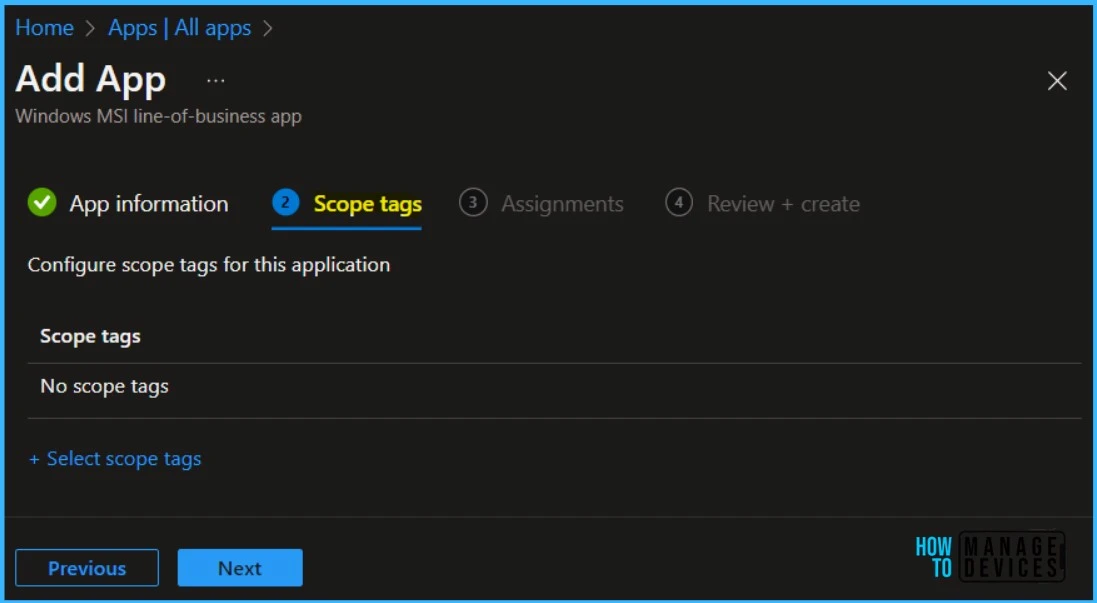
Under Assignments, In Included groups, click Add groups and then choose Select groups to include one or more groups to which you want to deploy KeePass, Click Next to continue.
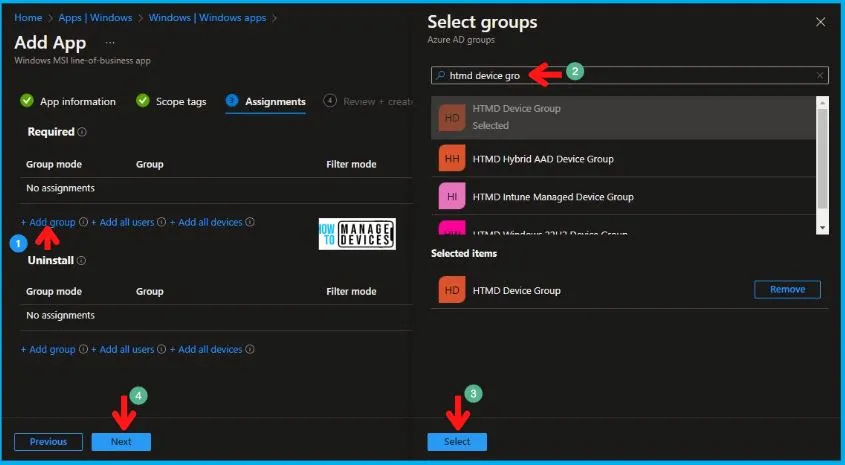
During the application creation process, you will see the details you provided. You can add the app to Intune by reviewing your settings and selecting Create.
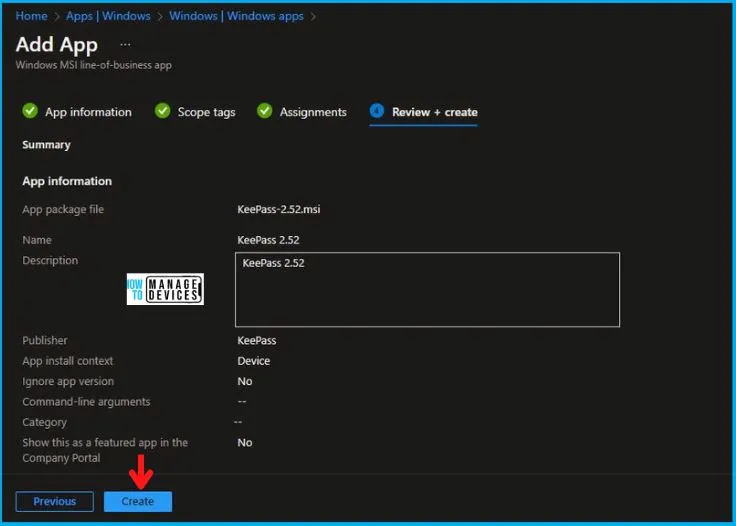
You will see the status Uploading is in progress – When will it be completed? The speed of the internet connection and the size of the application determine how long it takes.
We recommend waiting a while for the upload process to complete, and you can check the progress by clicking on the Notifications icon. You will receive the status “Upload finished” once the package has been uploaded and finished.
Monitor KeePass Deployment from Intune Portal
During the installation of an application, select the application, then select Monitor, where you can check the device and user check-in status. You can view additional details by clicking on the Device install status or User install status links.
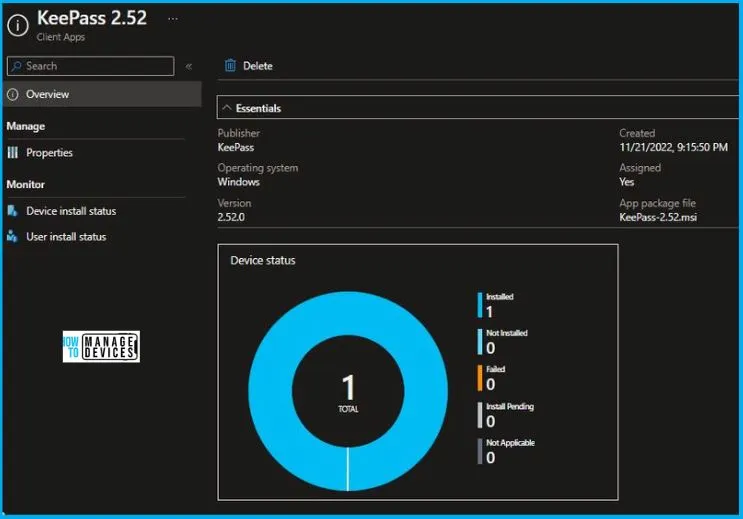
End User Experience
Now to check whether the application is assigned to the targeted device successfully or not, we need to log in to that machine. After doing so, we need to open the Company Portal and check. As you see below in the image, it’s showing there.
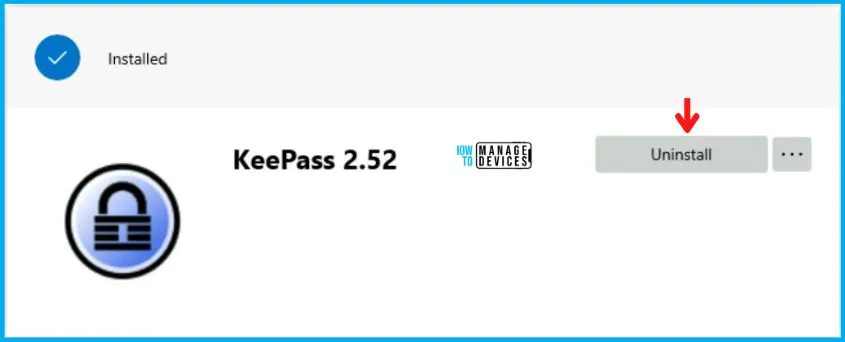
Hence the above picture shows that the KeePass application creation and assignment using Intune is successful. Also, KeePass is successfully installed on the machine on which we assigned it.
Author
Abhinav Rana is working as an SCCM Admin. He loves to help the community by sharing his knowledge. He is a B.Tech graduate in Information Technology.

